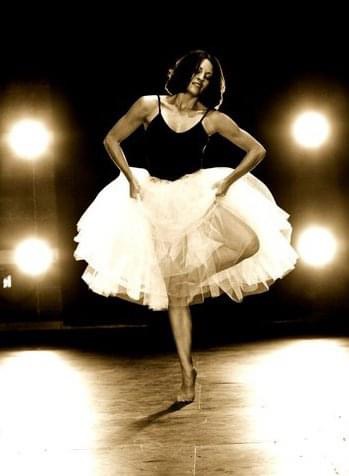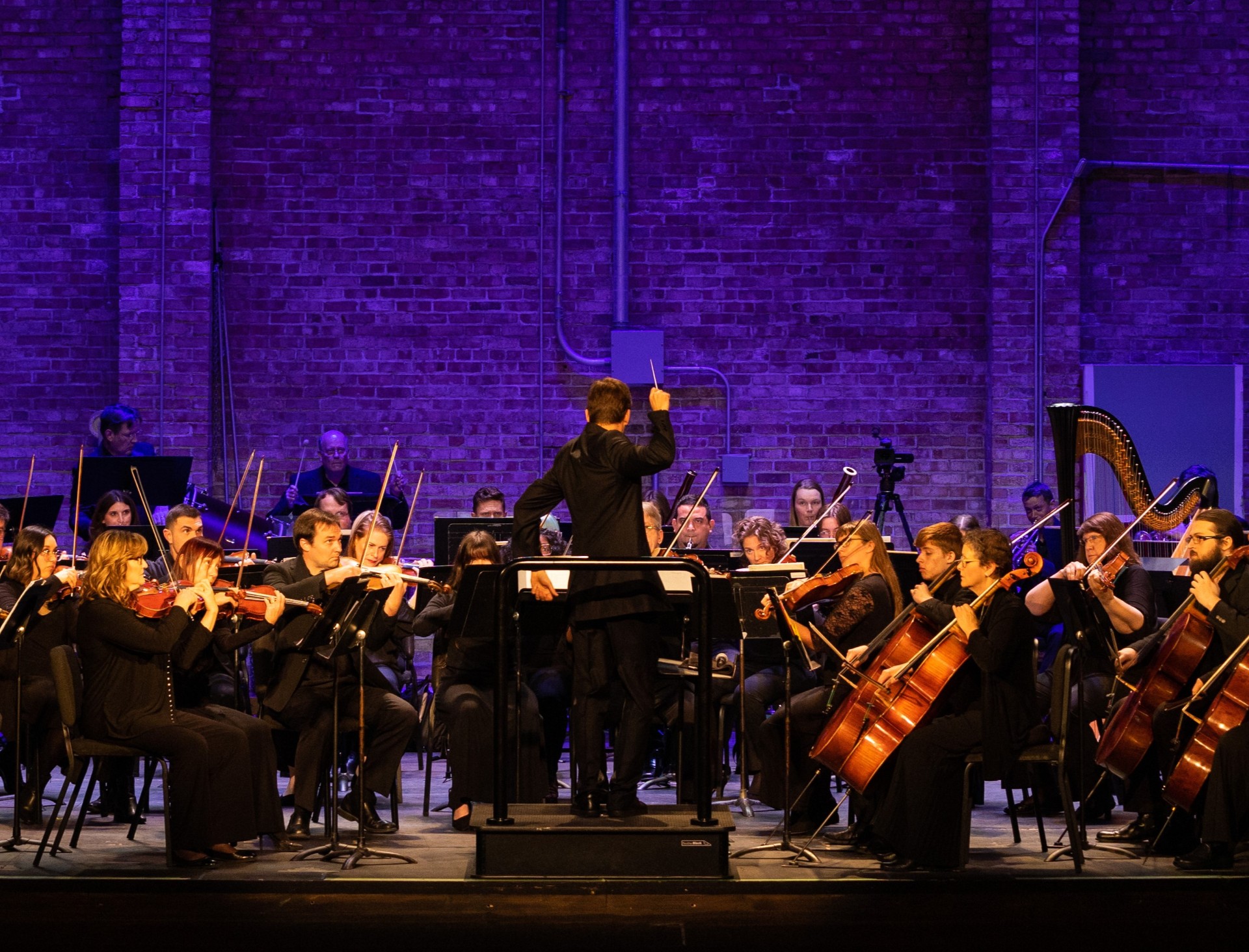Growing up in Salina as a student of dance instructor Peggy Simms, Alison Hiatt participated in several of the Salina Symphony’s annual Christmas Festival concerts, where she performed in ensemble numbers such as “March of the Wooden Soldiers.”
After graduating from Salina Central High School in 2001, Hiatt minored in dance at the University of Kansas. In the years since, she has continued to dance, becoming involved with Theatre Salina and its education program, Center for Theatre Arts, as a performer, choreographer and dance instructor.
Now Hiatt is returning to her dance roots with the Salina Symphony by performing as a solo dancer featuring her own original choreography.

Hiatt will be the featured dancer in “The Seven Deadly Sins,” the centerpiece presentation of the Salina Symphony’s November concert, “Lights, Camera, Cabaret!”
The concert will be at 4 p.m. Nov. 10 at the Stiefel Theatre for the Performing Arts, 151 S. Santa Fe.
“The Seven Deadly Sins” is a satirical ballet with a score by German composer Kurt Weill with a book by the legendary German playwright Bertolt Brecht. The work combines Brecht’s caustic wit, Weill’s cabaret music and creative dance to explore the complexities of human nature and society.
“It’s an honor to be given this opportunity to work on a piece this brilliant,” said Hiatt, who also is a wife and mother of two and a nurse practitioner in medical oncology at the Tammy Walker Cancer Center in Salina. “I was given free rein to create whatever movement I wanted, so it’s been an incredible challenge.”
The piece also includes numerous vocal sections, which feature soprano Janie Brokenicky and a Greek Chorus of vocal students from Kansas Wesleyan University.
The Symphony concert will open with dancers from Theatre Salina’s Center for Theatre Arts. The ensemble will perform “Willkommen,” the opening number to the classic musical “Cabaret,” directed by and featuring Maggie Spicer Brown, the theatre’s education director.
The concert also will feature two classic jazz numbers by American composer Leroy Anderson and two new works by Kyle Saulnier, a Vermont-based multi-instrumentalist and composer who fuses American music, modern jazz and industrial rock.
“It’s kind of a hodgepodge of mixed music, from jazz to cabaret music,” said Salina Symphony
conductor and music director Yaniv Segal. “I’ve been dying to do ‘The Seven Deadly Sins’ for a
long time, and I’m excited to be doing it in a place where these kinds of collaborations are
possible.”
A tale of two sisters
“The Seven Deadly Sins” tells the tale of two sisters, Anna I and Anna II, who may actually be the same person. Anna I, the singer, is the principal vocal role. Anna II, the dancer, is heard only infrequently. Anna I is portrayed as a cynical impresario with a practical sense, while Anna II is full of emotion and expressive artistic beauty with an all too human heart. The woman’s
“family” is portrayed by a Greek chorus.
The “sisters” set out from the banks of the Mississippi river to seek their fortunes in the big
cities of the U.S., intending to send their family enough money to build a house on the river.
“One actress just sings and tells the story, while the other just dances,” Segal said. “(Weill) wrote the part of the family as a barbershop quartet, but we’re using more singers from KWU as a Greek chorus.”
Each of the main seven scenes (which also includes a prologue and epilogue), focuses on one of the seven deadly sins, each encountered in a different American city. These include Sloth (city unnamed), Pride (Memphis), Wrath (Los Angeles), Gluttony (Philadelphia), Lust (Boston), Greed (Baltimore) and Envy (San Francisco).
In the satirical libretto, when Anna II tries to behave morally, she is scolded by Anna I and her family for committing one of the seven deadly sins.
“In each city Anna visits, she has another sin to deal with, but it’s never in a way you expect,” Segal said. “There’s nuance to it. It’s a comment on artists struggling to do things for themselves.”
“The Seven Deadly Sins” premiered in 1933 in Paris in a production produced, directed and choreographed by the legendary George Balanchine and featuring Weill’s wife, world- renowned actress and cabaret singer Lotte Lenya, as Anna I.
Segal said Brokenicky, who is the vocal music director at Rock Creek High School, co-founder and executive director of the Flint Hills Children’s Choir and an operatic soprano and clinician, is a perfect choice for Anna I.
“She’s performed with the Salina Symphony before, and she’s comfortable in multiple musical
genres,” he said. “She’s very thoughtful and has a great insight into the text.”
Segal also worked with Hiatt in outlining her dance moves throughout the piece but let her have free reign in choreographing movement that she felt complemented her own style.
“I’m trained in modern and contemporary dance with a little bit of jazz and lyrical,” Hiatt said. “At times I’m reacting directly to Janie as she’s telling the story through voice, and I’m telling the story through movement. We’re putting both parts together the week of the show. It’ll be an exciting experience.”
Also on the program
Other jazz and cabaret-flavored pieces the Salina Symphony will perform during the concert are two short works by Leroy Anderson, “Jazz Legato” and “Jazz Pizzicato.” Anderson was an American composer of short, light concert pieces, many of which were introduced by the Boston Pops Orchestra under the direction of Arthur Fiedler. Anderson was probably best known for composing “The Syncopated Clock” and the holiday classic “Sleigh Ride.”
“We’ve had requests to do more Leroy Anderson, and this was a great time to do it,” Segal said.
Saulnier is a multi-instrumentalist who performs on acoustic and electric basses and baritone saxophone, specializing in creative, composer-driven projects that blur the lines of traditional genres. He is artistic director of the Vermont Jazz Ensemble and director of the Vermont Youth Orchestra’s Jazz program. He also composes and arranges for his own flagship ensemble, the Awakening Orchestra.
The Salina Symphony will perform two of Saulnier’s pieces: “a foundation of sand.” and “the Sun upon a hill.” Segal said he has known Saulnier for nearly 20 years, but this will be his first opportunity to perform Saulnier’s original music.
“Kyle is a jazz musician but began writing symphonic music, using jazz harmonics and chords,”
Segal said. “He will also be playing a baritone sax solo during the concert, improvising onstage like he would with his own jazz band.”
The combination of this “hodgepodge” of classic and contemporary works will make this concert “a very special afternoon,” Segal said.
Concert tickets
Tickets for the concert are $45 and $42 for adults and $25 for students and may be purchased at the Stiefel Theatre box office, by calling 785-823-1998 or at www.salinasymphony.org.
Student tickets must be purchased at the Stiefel Theatre box office.
A pre-concert talk with Segal and Saulnier will begin at 3 p.m. Patrons may enter through the main Stiefel Theatre doors, which will open at 2:45 p.m.
Season tickets for the “Kaleidescope” Salina Symphony season can still be purchased by calling
785-823-8309 or at the Symphony office located on the second floor of the Stiefel Theatre.
For more information, contact Adrienne Allen at 785-823-8309 or visit salinasymphony.org



